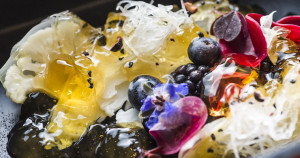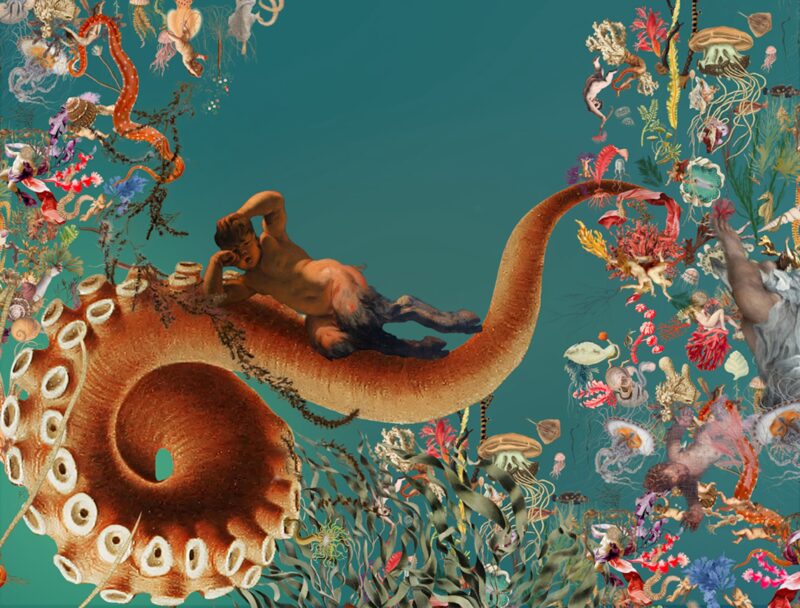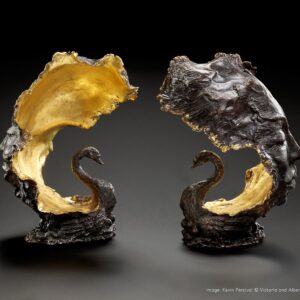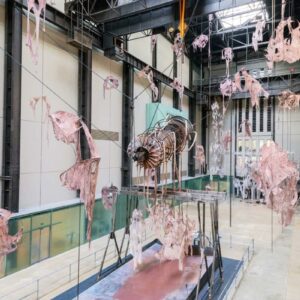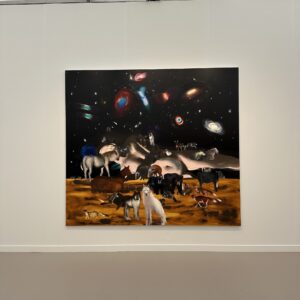Today’s guest is Silvia Mariotti, Italian artist working with photography, sculpture, and video. She has exhibited both nationally and internationally. Mariotti researches the habitat surrounding us, identifying the linkages between artificial and natural. The photomechanic eye pauses on elusive atmospheres, anomalous elements or enigmatic situations. She captures all those chips that – when considered individually – make up the fabric of existence, dotted with desires and longings, balances and contradictions, lights and shadows. In all her works, Silvia Mariotti tries to gather experience on places and people to better reflect the environmental and social situation in which we live.
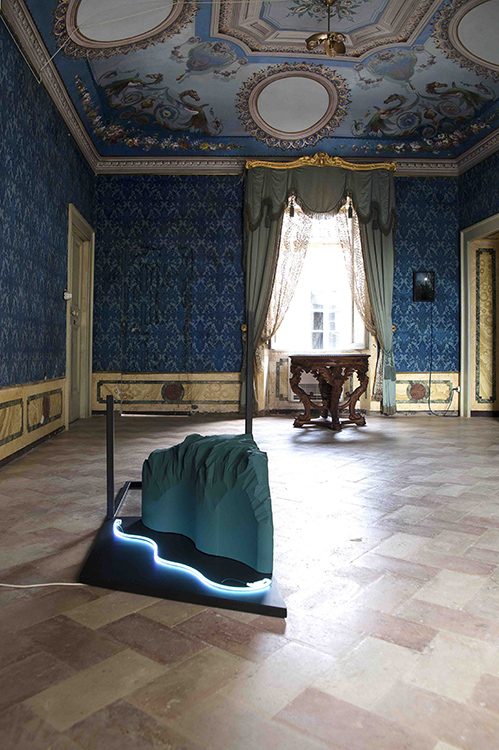
Silvia Mariotti, Exhibition view ‘Anteprima a Palazzo’, 2018. Palazzo Bernetti Evangelista, Fermo, Courtesy the artist and A plus A Gallery
1. Art organizations and individuals are launching a plethora of online initiatives to stay creative. Yet, a proper economical support has yet to be provided. What does it mean to be included in a project?
Generally, I am very open to cultural output and, provided that my contribution can add value to a project, I like to chip in, even though there might not be a financial return. However, this is a very complex moment in history and there are maybe too many expectations on artists, who are sought-after by a wide range of different organizations. The artists might find themselves in a tough position and end up making decisions that will often be misunderstood by many who don’t fully realise the pressure they are under.
I also believe that it’s important to distinguish between good and not-so-good proposals; since a good initiative with a real purpose will hold a wide appeal, it happens that many people, in order to become more visible and discoverable on social media, will start anything. This way, a lot of proposals without a strong value on a content level get mixed in with other more valid ones; in the end, the artist’s workflow will be affected, both in terms of creativity and of financial return.
2. Can you share a sneak peek into what you will be doing / have done for the project?
Together with many other artists, both Italian and international, I took part in an initiative to create a “Colouring book”. The idea was to ease the burden of social distancing and lockdown by giving people a chance to share something with one another and distract themselves, as they could download the drawing and, this way, interact with the works of art in a new way. At the moment, I am participating in an exposition where part of the proceeds will be donated to a non-profit organization which offers medical assistance to families and people in need.
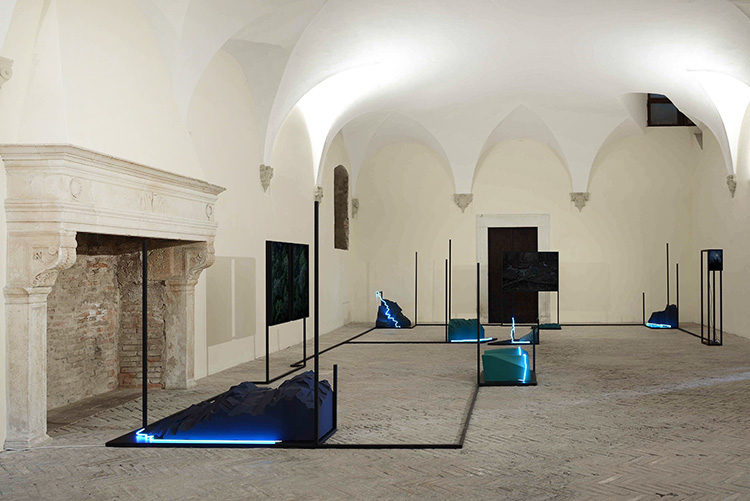
Silvia Mariotti, Exhibition view Tre Notturni, 2018. Spazio K – Palazzo Ducale di Urbino. Courtesy the artist and A plus A Gallery
3. Do you think this crisis will change us, and the art world permanently? Or will we go back to our hectic lives as soon as we will be allowed to?
I’d like to think that something in the way we live will have to significantly change and we will eventually say goodbye to our usual hectic life; instead, we will take a step back and embrace a more human standard of living, less reliant on capitalistic values.
4. Are you working on something else at the moment?
I am about to finish an editorial project related to my artist’s book, De uma estrela à outra, which focuses on the bond between two distant lands, Italy and Brazil, and the symbolic encounter with the still-vivid presence of the Italian poet Giuseppe Ungaretti; this experience allowed me to establish a deep dialogue with the Italian-Brazilian female poet, Francesca Cricelli, in a work that features both my pictures of nocturnal nature and her poetic verses.
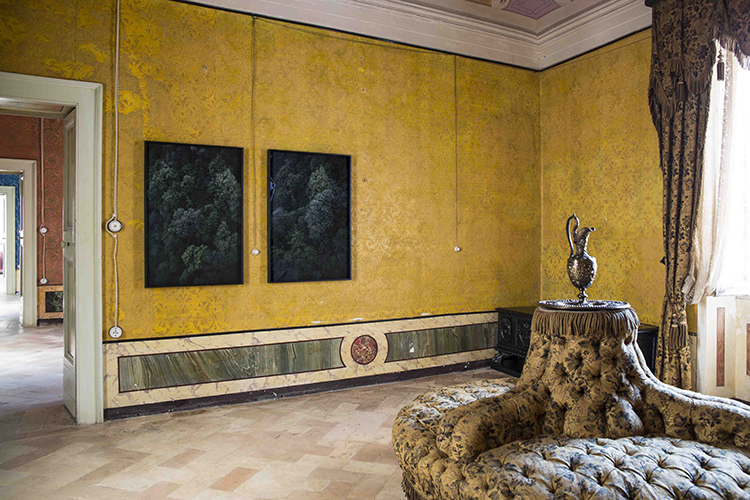
Silvia Mariotti, Exhibition view Anteprima a Palazzo, 2018. Palazzo Bernetti Evangelista, Fermo, Courtesy the artist and A plus A Gallery
5. How are you reacting to these particular circumstances? What have you learnt from it?
I tried to react: there were very productive moments and much more problematic ones. Something so unsettling and illogical as this pandemic can make you feel helpless sometimes, but also more vulnerable and smaller; that’s why you need to give more attention to the small details around you and change your perspective on things.
6. How has the current situation impacted how you work — both in the method and ideologically?
Ideologically, nothing’s really changed; on the contrary, maybe because I cannot travel so much, I wish I could get even closer to new natural landscapes, which have been at the centre of my artistic research for a long time and are my favourite place to analyse historical and social issues. From a methodological point of view, I have been using a more experimental approach and considering different new types of supports and materials; this is the outcome of a long process which was, until recently, a work in progress.
7. Do you see any silver linings in this crisis?
Ironically, I have always focused my research on the absence of light. In my work, my inspiration comes from diving into the nocturnal world or the crepuscular crack, as darkness and shadow are dimensions which can reveal deeper truths, while daylight, with its immediate essence, doesn’t offer any space to more meticulous and immersive readings.
Such devastating social, economic and humanitarian crisis can make you feel like you’re imprisoned inside a dark shell without any visible way out; however, I feel that the strange type of time dilation that we have all been experiencing has given us the chance to become better observers and catch some distant glares, because darkness always contains some.
8. Did you have any show / project planned that has been disrupted by the Covid?
Among the various projects I had planned, I was going to present my artist’s book at the National Gallery of Modern and Contemporary Art in Rome in the first week of May, together with the poet Francesca Cricelli and the literary critic Andrea Cortellessa. During this event, I would have shown some of my artwork in dialogue with the permanent collection of the Gallery.
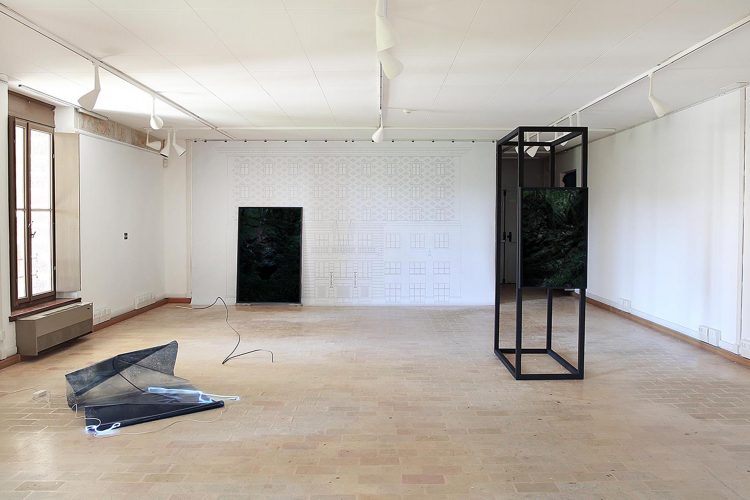
Silvia Mariotti, Exhibition view Fronte invisibile, 2016. Villa Manin di Passariano, Udine
9.What’s on your reading list and what book made the greatest impact on you?
Recently, I’ve changed my reading habits and I almost exclusively read narrative books, except for some poetry books. I think that this process happened in a natural and possibly necessary way, since it has given me the chance to tear down the walls I was surrounded by and to open myself to new elaborations. Other Lives But Mine by Emmanuel Carrère is an intense, brutal and non-fiction book; in a certain way, it’s very intimate and the reader cannot do anything but stop and ponder about the ephemeral essence of the human race, the often-useless priorities of men and the truths about what’s around us.
10. Favourite quarantine Instagram live / podcast / account?
I mainly listen to Radio Rai 3, because it has some interesting programmes such as Fahrenheit, which is about literature, or Radio3 Mondo, that focuses on current events, places and stories from all over the world. I also listen to podcasts more than once, so that I can take notes and write down things I can study during my artistic research. On social media, I follow artists, galleries, independent spaces and international institutions; in the last years, I’ve been following many Brazilian institutions, such as Masp, Pivoartepesquisa, _casadopovo, sp_arte. I spent quite some time in Brazil and I have a deep connection with this land, where I had profound experiences and met incredible people.

